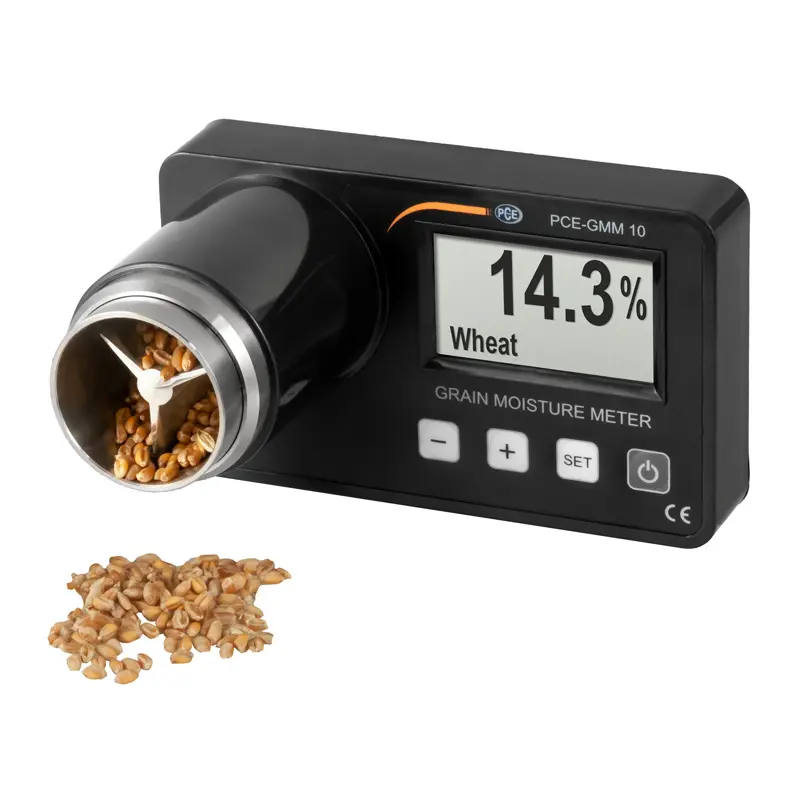Leading 10 Advantages of Using a Moisture Meter for Definite Measurements in Your Home
Recognizing the Importance of a Moisture Meter in Avoiding Mold and Water Damage in your house
In the world of home maintenance, the presence of wetness can often be a quiet yet formidable enemy, capable of causing prevalent mold growth and perilous water damages if left unattended. Comprehending the value of a moisture meter in this battle is not just an option but a tactical requirement.
Significance of Moisture Discovery
Reliable moisture discovery methods are vital for guarding residential properties and protecting against potential mold growth and water damage. Dampness can seep into different building materials, resulting in architectural concerns and wellness threats. By making use of a dampness meter, residential property proprietors can proactively determine areas prone to excess wetness, enabling timely intervention and mitigation strategies.
Moisture meters provide accurate analyses of dampness degrees in different materials such as drywall, concrete, and wood. This information aids in determining areas of concern, even in hidden or hard-to-reach locations. Early discovery of moisture buildup allows prompt repairs or modifications to stop additional damages.

Just How Moisture Meters Job
Wetness meters play a critical role in the aggressive identification of excess wetness, aiding in the avoidance of potential mold and mildew development and water damage by providing precise readings of dampness degrees in various structure materials. These gadgets work based on different concepts, depending upon their type. Moisture Meter. Pin-type moisture meters, for circumstances, have two pins that permeate the material to gauge the electric resistance between them. When wetness exists, it improves the material's conductivity, bring about a lower resistance analysis. Pinless moisture meters, on the various other hand, usage electro-magnetic sensors to check the material without creating damage. These sensing units give off electro-magnetic signals that permeate the product and measure the dielectric residential properties, indicating wetness web content. Some advanced wetness meters combine both pin and pinless modern technologies for comprehensive moisture detection. Recognizing just how moisture meters function is crucial for accurate and timely dampness level assessments, making it possible for effective preventative measures against mold and water damage.
Finding Early Caution Indications
Upon preliminary examination of a residential property, identifying subtle signs of excess moisture ends up being vital in the very early detection of potential mold growth and water damages. Some typical early indication include stuffy smells, water spots on wall surfaces or ceilings, peeling paint or wallpaper, and warped or blemished surfaces. Moldy odors frequently indicate the visibility of mold and mildew or mold, even if no noticeable indications appear. Water discolorations can indicate leaks or infiltration, while peeling paint or wallpaper might be an outcome of dampness endangering the bond of these products to the surface. Distorted or stained surface areas, such as bending floorboards or blemished drywall, are clear indications of water damage. Furthermore, an increase in allergy signs and symptoms or breathing issues amongst residents might suggest the visibility of mold because of excess wetness. By quickly recognizing and attending to these very early indication, homeowners can mitigate the threat of substantial Full Report mold and mildew growth and water damage in their residential properties.
Avoiding Mold Growth
Identifying early caution indicators of excess moisture within a residential or commercial property not just makes it possible for prompt discovery of possible mold growth and water damage yet likewise serves as a proactive procedure in preventing the proliferation of mold. To properly prevent mold growth, it is vital to address any type of resources of dampness without delay.
Along with attending to moisture sources, maintaining interior humidity degrees below 60% can substantially hinder mold and mildew development. Proper ventilation, appropriate insulation, and making use of a/c or followers can assist manage interior moisture levels. Checking dampness degrees in locations vulnerable to moisture, such as basements and crawl areas, utilizing a wetness meter can likewise help in very early detection of elevated moisture degrees and prospective mold and mildew development. By taking positive steps to stop excess moisture and mold growth, homeowners can visit this website safeguard their home and indoor air quality.
Advantages of Routine Monitoring
Regular surveillance of wetness degrees in a residential or commercial property can play an essential role in keeping a healthy interior environment and avoiding potential mold and mildew and water damage. By regularly inspecting dampness levels, homeowners can find any concerns promptly and take essential actions to avoid mold development and water damages. One of the crucial advantages of regular surveillance is very early discovery. By recognizing and resolving high dampness levels early on, house owners can step in before mold and mildew has the chance to spread and create. This positive strategy can save both time and money in the lengthy run by avoiding extensive mold remediation and fixing prices.
Furthermore, regular monitoring allows house owners to track patterns and patterns in wetness levels in time. By developing a standard and tracking modifications, individuals can identify any areas of issue or prospective vulnerabilities in the building's framework. This data-driven approach makes it possible for targeted treatments and upkeep efforts to deal with underlying problems before they escalate right into even more significant problems. Ultimately, the regular tracking of moisture levels empowers homeowners to shield their building, secure their health and wellness, and protect the integrity of their interior atmosphere.

Conclusion

By using a dampness meter, residential or commercial property owners can proactively recognize areas prone to excess wetness, enabling for timely intervention and reduction methods.

Keeping track of moisture levels in areas susceptible to moisture, such as basements and crawl rooms, utilizing a wetness meter can also help in early detection of raised wetness levels and potential mold and mildew development. (Moisture Meter)